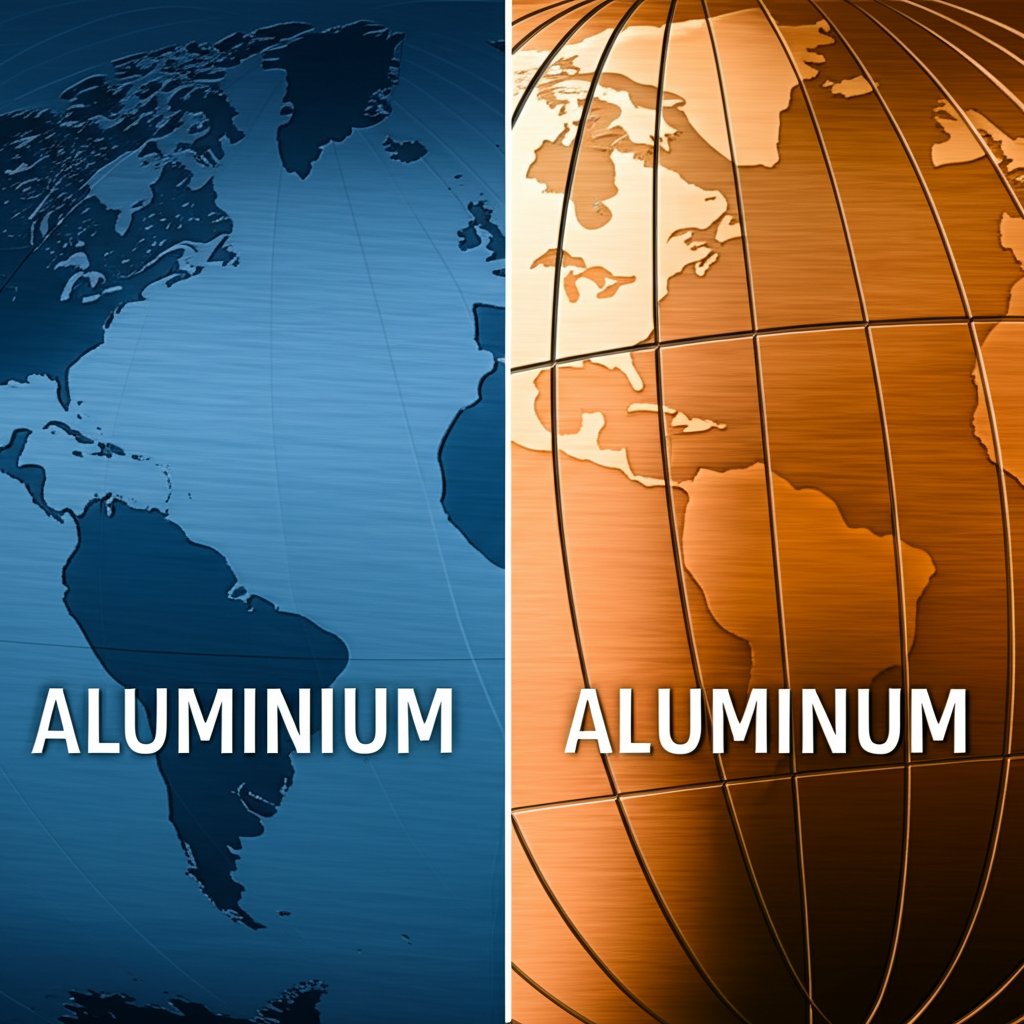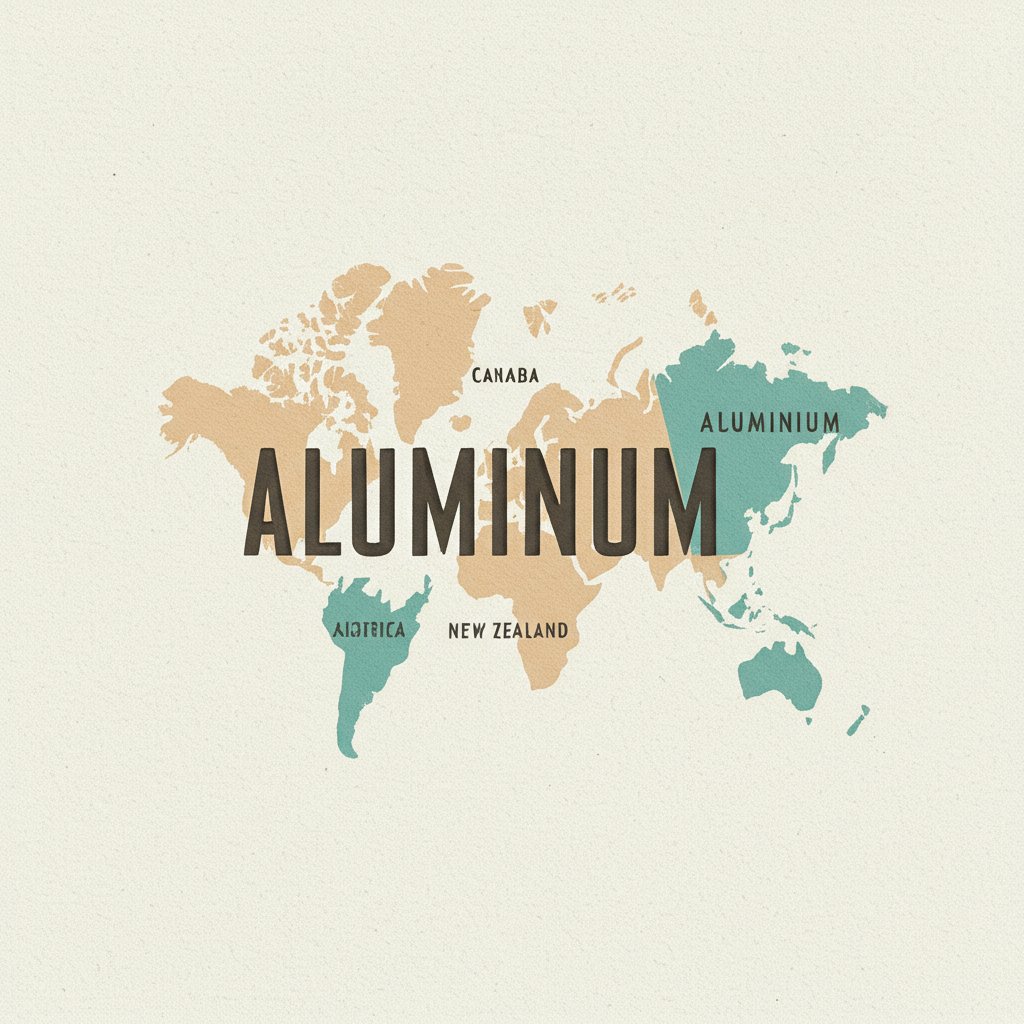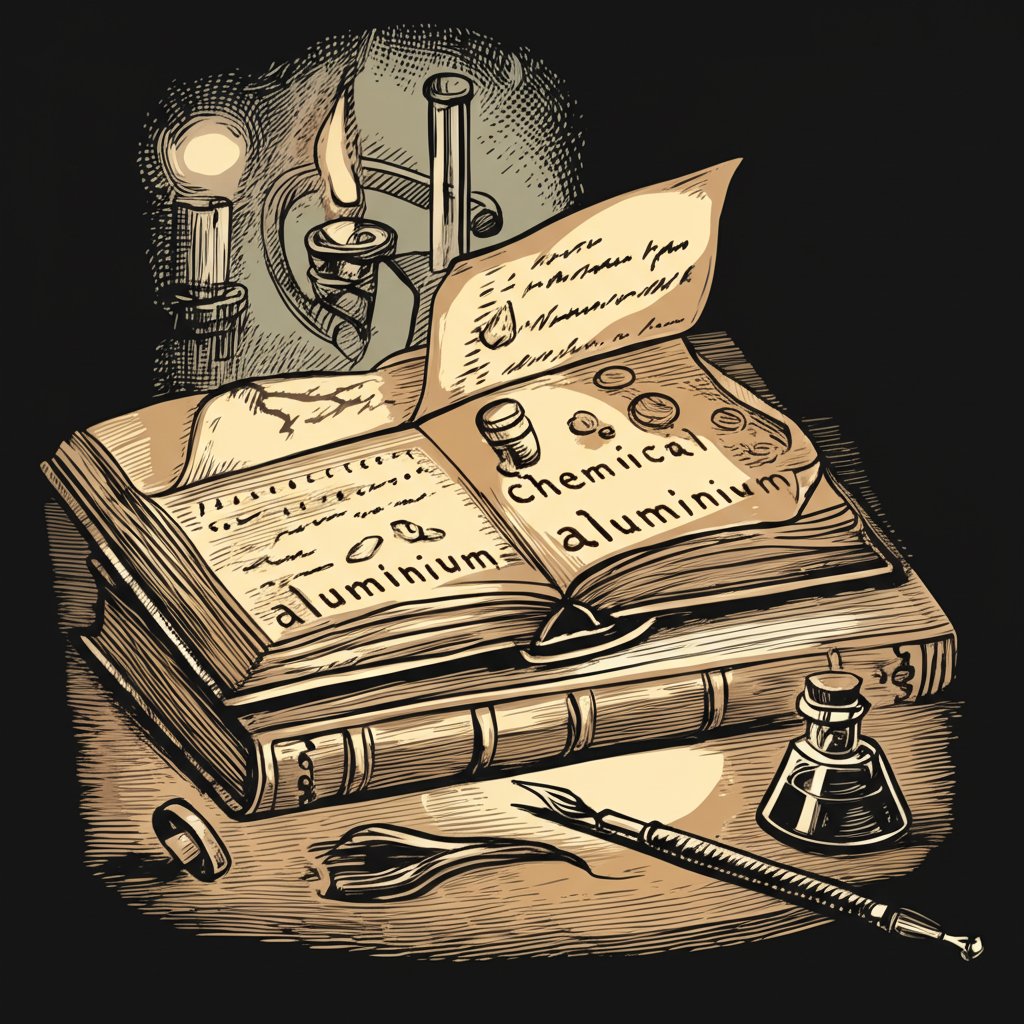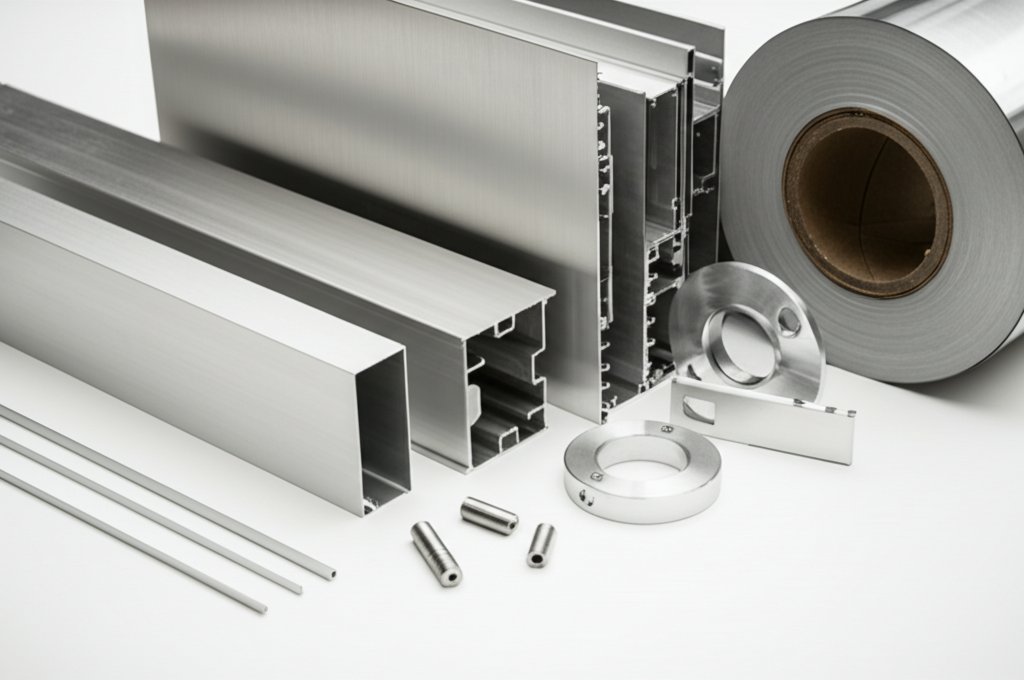
Have you ever wondered why you sometimes see "aluminium" and other times "aluminum"—even though both words seem to refer to the same shiny, lightweight metal? If you’ve noticed the two spellings on soda cans, kitchen foil, or in science textbooks, you’re not alone. The aluminium vs aluminum difference is a classic example of how language evolves and diverges across regions, sparking curiosity and confusion for students, professionals, and everyday readers alike.
Let’s clear things up right from the start: both "aluminium" and "aluminum" refer to the same chemical element, represented by the symbol Al and holding atomic number 13 on the periodic table. There’s no difference in the metal itself—just in the way it’s spelled and pronounced. The root of this duality lies in the element’s naming history and the way English developed in different parts of the world. In American English, "aluminum" is the standard, while British English and most of the rest of the world use "aluminium." Both terms are widely accepted in scientific and industrial contexts, and you’ll notice that even major chemistry organizations recognize both spellings as correct (Dictionary.com).
Throughout this article, we’ll demystify the aluminium vs aluminum difference by exploring their historical origins, how each spelling is used globally, and why these distinctions matter. Whether you’re a writer, a scientist, or simply curious, you’ll gain a clear understanding of how this single element came to have two names—and why both continue to be relevant today.

When you spot "aluminium" in a British textbook or "aluminum" on an American soda can, you might wonder: why the difference? The answer is surprisingly simple—it's all about where you are in the world and the language conventions of that region. Both spellings are correct, but each is preferred in different English-speaking countries. Let’s break down the aluminium vs aluminum difference so you’ll know which to use and why.
Imagine you’re writing a report, sending an email, or labeling a product. Should you write "aluminium" or "aluminum"? The choice depends on your audience’s location:
| Region or Standard | Preferred Spelling | Notes |
|---|---|---|
| United States | Aluminum | Standard in American English; used in industry, science, and daily life |
| Canada | Aluminum | Follows American spelling, though "aluminium" can occasionally appear |
| United Kingdom | Aluminium | Standard in British English; appears in education, media, and government |
| Australia & New Zealand | Aluminium | British spelling is the norm in these regions |
| International (IUPAC) | Aluminium | Official standard for scientific and academic writing globally |
Sounds complex? Not really. If you’re in North America, you’ll almost always see "aluminum." In the UK and most other English-speaking countries, "aluminium" is the go-to spelling. This split is similar to other spelling differences like "color" vs. "colour" or "theater" vs. "theatre"—it’s a reflection of broader patterns in American and British English (QuillBot).
This difference isn’t just a matter of personal preference; it’s rooted in linguistic history and the evolution of English on different continents. Over time, dictionaries, style guides, and academic organizations in each region standardized their preferred form. For instance, the American Psychological Association (APA) requires "aluminum" in U.S.-based publications, while British institutions stick with "aluminium." Even though both forms are recognized in major dictionaries, using the spelling that matches your audience’s expectations is usually the best practice.
Understanding these regional spelling norms will help you communicate clearly and avoid confusion—especially if you’re working with international teams or publishing for a global audience. Next, let’s explore how these two spellings came about and what historical twists led to today’s divide.

Ever wondered how a single metal ended up with two names? The aluminium vs aluminum history is a fascinating tale of scientific discovery, linguistic evolution, and international standards. If you’ve asked yourself, “aluminium vs aluminum—which came first?” you’re not alone. Let’s break down how both spellings emerged and why each found its place in different parts of the world.
Imagine the early 1800s—a time when scientists were racing to discover new elements. In 1808, Sir Humphry Davy, a renowned British chemist, identified a new metal in alum and initially called it "alumium." Shortly after, he revised the name to "aluminum." This was the first time the name appeared in print, specifically in Davy’s 1812 book, Elements of Chemical Philosophy. But the story didn’t end there. To align with the naming conventions of other elements (like sodium, potassium, and magnesium), British scientists and international groups soon adopted the spelling “aluminium.”
To make things clearer, here’s a chronological look at the key events that shaped the aluminium vs aluminum difference:
So, which spelling is more "correct"? The answer is: both! The split occurred as English evolved differently on each side of the Atlantic. In North America, “aluminum” stuck, thanks to early dictionaries and scientific organizations. Across the UK and much of the world, “aluminium” became the norm, fitting with the -ium trend for element names.
This duality isn’t unique to this metal—think of other words like “sulfur” (U.S.) and “sulphur” (UK). When it comes to aluminium vs aluminum history, the naming journey reflects not just chemistry, but also the evolution of language and international collaboration in science. Up next, we’ll see how these spelling differences influence pronunciation as you travel the globe.
Ever found yourself hesitating before saying "aluminium" or "aluminum" out loud? You’re not alone! The aluminium vs aluminum pronunciation difference is just as striking as the spelling—and it’s all about where you are in the world. Let’s break down exactly how each version is spoken, so you’ll never second-guess yourself in conversation or presentations.
Imagine you’re at a science fair in London or a chemistry class in New York. You’ll notice the pronunciation changes with the spelling. Here’s a quick guide:
To make it even clearer, here’s a side-by-side comparison:
| Spelling | Phonetic Pronunciation | Common Regions |
|---|---|---|
| Aluminium | al-yoo-MIN-ee-um | UK, Australia, New Zealand, International |
| Aluminum | uh-LOO-min-um | United States, Canada |
The answer is simple: pronunciation follows spelling conventions by region. When you see the extra "i" in "aluminium," you naturally add an extra syllable. No matter which version you use, you’re talking about the same element. So, next time you’re discussing aluminium vs aluminum pronunciation, remember—it’s all about geography and tradition, not chemistry. Up next, let’s see how these regional differences play out on a global scale.
When you travel, read international news, or even scroll through online forums, you might notice that the aluminium vs aluminum debate pops up everywhere. Why does this single element have such a split identity? The answer lies in a fascinating mix of regional language traditions, scientific standards, and the way communities—both local and online—continue to discuss and defend their preferred spelling.
Imagine you’re reading a product label in Toronto, a science journal in London, or a Reddit thread about metalwork. You’ll quickly see that the spelling you encounter depends on both geography and context. Here’s a practical breakdown:
| Country or Standard | Preferred Spelling | Typical Contexts |
|---|---|---|
| United States | Aluminum | Everyday use, industry, science, education |
| Canada | Aluminum | Industrial, commercial, academic; 'aluminium' sometimes appears in British-influenced texts |
| United Kingdom | Aluminium | All contexts—media, education, industry |
| Australia & New Zealand | Aluminium | Standard across industries and education |
| IUPAC (International Standard) | Aluminium | Scientific, academic, and international publications |
So, if you’re wondering about aluminium vs aluminum Canada, the answer is that "aluminum" is the prevailing choice, reflecting the country’s close ties to American English, though "aluminium" can occasionally be found in more formal or British-influenced contexts (Sunrise Metal).
This global split isn’t just about spelling—it’s about identity and tradition. In North America, "aluminum" is deeply woven into everyday language, packaging, and even scientific writing, thanks to early decisions by American dictionaries and the American Chemical Society. Meanwhile, the UK, Australia, New Zealand, and most international organizations stick with "aluminium," aligning with the broader trend of element names ending in "-ium." The International Union of Pure and Applied Chemistry (IUPAC) officially recognizes "aluminium" as the international standard, which you’ll see in global scientific literature (Seather Technology).
Curious how people actually feel about this difference? Head to a platform like Reddit, and you’ll find lively discussions under threads labeled aluminum vs aluminium reddit. Users from different countries often debate which spelling “sounds right,” which is more logical, or which should be adopted globally. These conversations highlight how language is shaped not just by official standards, but by community consensus and cultural pride.
Ultimately, the ongoing dialogue—whether in academic circles, manufacturing plants, or online forums—keeps the aluminium vs aluminum difference alive and relevant. As you continue reading, you’ll discover that while spelling varies, the science and applications remain the same worldwide.

When you’re comparing aluminium vs aluminum alloy or even wondering about aluminum foil vs aluminium in your kitchen, you might ask: Does the way we spell the name actually change the material? The answer is refreshingly simple—no, the spelling has no effect on the metal’s physical or chemical properties. Whether you call it aluminium or aluminum, you’re working with the same element, the same alloys, and the same performance in industrial and household applications (Sunrise Metal).
Imagine you’re sourcing parts for an engineering project or picking up a roll of foil at the store. You’ll notice packaging and technical documents might use either spelling depending on the country of origin, but the underlying material is identical. Here’s what truly determines quality and suitability:
For example, common aluminum alloys like 6061 or 7075 are referenced in both British and American standards, and their core characteristics don’t change with spelling. Likewise, household foil—whether labeled as “aluminium foil” in the UK or “aluminum foil” in the US—offers the same lightweight flexibility and heat conductivity for food storage and cooking.
When choosing materials for construction, transportation, or consumer goods, engineers and buyers rely on detailed specifications, not regional language. Factors like grade, thickness, and alloying elements are what drive performance and safety. For instance, Alloy 6061 is prized for its strength and versatility, making it a top choice in everything from architectural frames to automobile parts, regardless of what the datasheet calls it (Sunrise Metal).
Imagine a global project team with members from the US and UK. They may use different terms, but when they specify "6061-T6 aluminum alloy," everyone understands exactly what material is required. This shared technical language ensures consistency and quality across borders.
Ultimately, what sets high-quality aluminum products apart is not the name, but the commitment to precision and excellence. Companies like Shengxin Aluminum exemplify this focus, offering a wide range of aluminum profiles and alloys engineered to exacting standards for industries worldwide. Their expertise in extrusion, coating, and deep processing ensures that every profile—whether destined for a subway line in Beijing or a state-of-the-art building in Europe—meets rigorous performance criteria, regardless of the spelling on the blueprint.
So, next time you encounter the aluminium vs aluminum debate, remember: it’s the technical details and the manufacturer’s expertise that truly matter. Up next, let’s see how these terms are handled in scientific and chemical contexts around the world.
When you open a chemistry textbook or scan the periodic table, you might pause at element number 13 and wonder: is it "aluminium" or "aluminum"? This isn’t just a spelling debate—it’s a reflection of how science, language, and international standards come together. Let’s break down how each term is used in scientific contexts and why both persist, even in the world’s most precise disciplines.
Imagine a global science conference. You’ll hear both terms, depending on where the speaker is from. Here’s how the naming plays out in professional and academic settings:
Sounds confusing? It’s actually quite logical once you see the pattern. Internationally, chemical names often follow the "-ium" suffix for consistency (think magnesium, sodium, potassium). That’s why "aluminium" is favored in global standards and appears on most non-US periodic tables. In contrast, American English streamlines the spelling to "aluminum," a choice that’s been reinforced by dictionaries and scientific societies for nearly a century.
Let’s look at a practical example: when comparing compounds like aluminium sesquichlorohydrate vs aluminum chloride, the spelling on the ingredient list may change based on the region, but the underlying chemistry does not. The same goes for scientific papers—one journal might discuss "aluminium alloys," while another refers to "aluminum alloys," yet both are talking about the same material.
Ultimately, the coexistence of both spellings in science highlights the balance between international standardization and local tradition. Whether you’re referencing the aluminium vs aluminum periodic table or reading chemical safety data sheets, context is key. Scientists, students, and industry professionals quickly adapt, recognizing that the element’s properties—and its symbol, Al—remain unchanged, no matter how it’s spelled.
Next, let’s see how these naming conventions extend into everyday products and why ingredient lists might look different depending on where you shop.

When you pick up a stick of antiperspirant or scan the label on your favorite deodorant, do you ever wonder why some ingredients start with "aluminum" while others use "aluminium"? Or maybe you’ve noticed terms like aluminium zirconium tetrachlorohydrex gly and aluminum chlorohydrate and wondered what they really mean. Sounds complex? Let’s break it down so you can make sense of these ingredient lists—and see how the story of this versatile element stretches far beyond the bathroom shelf.
In personal care, especially antiperspirants, you’ll often find a variety of aluminum-based compounds. The spelling you see—"aluminum" or "aluminium"—usually matches the product’s country of origin or target market. Here’s what you’re likely to encounter:
In short, whether you’re looking at aluminum vs aluminium free deodorant options, the presence—or absence—of these compounds is what matters. Ingredient lists reflect regional spelling conventions, but the function remains the same: to reduce visible perspiration by blocking or swelling sweat pores.
It’s important to remember that the base element’s spelling—aluminum or aluminium—is only one part of much longer and more complex chemical names. For example, aluminium zirconium tetrachlorohydrex gly vs aluminum chlorohydrate may look different, but both are aluminum-based salts with slight variations in their chemical makeup. The rest of the name describes the specific form and how it interacts with your skin.
And despite common concerns, research shows that the minute quantities of aluminum compounds used in personal care products are not readily absorbed by the skin, and leading health organizations have not established a direct link between these ingredients and significant health risks (Paula's Choice). Still, if you prefer to avoid these compounds, look for products labeled "aluminum-free" or "aluminium-free," depending on your region.
Imagine the journey of aluminum from your bathroom shelf to the world’s most advanced infrastructure. While the spelling may differ, the element’s adaptability is universal. In addition to its use in cosmetics and personal care, aluminum is a cornerstone of modern industry—shaping everything from transportation to construction. Companies like Shengxin Aluminum exemplify this versatility, supplying high-quality aluminum profiles for demanding projects in rail transit, architecture, and high-tech manufacturing. Their expertise ensures that, whether it’s an ingredient in your deodorant or a structural component in a subway line, you’re benefiting from the unique properties of this remarkable element.
So next time you read an ingredient list or spot a product labeled "aluminum" or "aluminium," you’ll know: it’s more than just a spelling difference—it’s a story of chemistry, language, and innovation that reaches into every corner of daily life. Up next, let’s see how to choose the right spelling for your audience and context.
When you’re drafting a report, building a website, or labeling a product, you might pause and wonder: aluminium vs aluminum—which to use? The answer depends on your audience, your organization’s style preferences, and the need for clarity. Let’s break down how you can make the right choice, every time.
Imagine you’re writing for an international client or publishing a technical document. Should you go with "aluminum" or "aluminium"? Here’s a practical checklist to guide your decision:
Remember, both words refer to the same element—there’s no technical or scientific difference. Your choice is about clear communication, not chemistry.
By tailoring your spelling to your audience and context, you’ll ensure your writing is both accurate and accessible. Up next, let’s recap the key takeaways and see why, regardless of spelling, the value of this remarkable metal remains unchanged.
When you step back and look at the aluminium vs aluminum summary, the story is about much more than just a letter or two. Throughout this article, we’ve explored how a single element gained two spellings, distinct pronunciations, and vibrant regional identities. Yet, whether you write "aluminum" or "aluminium," you’re talking about the same remarkable metal—one that has shaped industries, advanced technology, and found its way into everyday life across the globe.
Imagine sourcing materials for a critical infrastructure project or selecting components for advanced manufacturing. What matters most isn’t the spelling on the datasheet, but the quality, precision, and reliability of the metal itself. That’s why, regardless of regional terminology, industry leaders prioritize technical standards and trusted partnerships.
For those seeking the best aluminium profiles manufacturer, companies like Shengxin Aluminum set the benchmark. With deep expertise, advanced production capabilities, and a commitment to excellence, Shengxin delivers high-quality aluminum solutions for everything from eco-friendly building facades to high-tech transportation systems. Their success shows that, whether you call it aluminum or aluminium, true value is defined by performance and innovation.
So, next time you encounter the aluminium vs aluminum debate, remember: the name may change, but the potential and versatility of this element remain constant. Focus on choosing the right partner and the best material for your needs—and let the spelling take care of itself.
The spelling 'aluminum' was adopted in the United States after early publications and dictionaries favored this version. The American Chemical Society officially standardized 'aluminum' in 1925. Meanwhile, 'aluminium' was adopted internationally to align with other element names ending in '-ium'.
Both pronunciations are correct, depending on regional norms. In American and Canadian English, it is pronounced 'uh-LOO-min-um', while in British, Australian, and international English it is 'al-yoo-MIN-ee-um'. The pronunciation matches the local spelling.
Sir Humphry Davy first named the element 'alumium', then revised it to 'aluminum'. British scientists later adjusted it to 'aluminium' for consistency with other element names. The American spelling remained as 'aluminum' due to early dictionary and scientific usage.
No, the spelling difference has no impact on the metal's physical or chemical properties. Whether labeled as 'aluminium' or 'aluminum', the alloys and products like foil have identical characteristics. Quality is determined by technical specifications and manufacturer expertise, such as those provided by Shengxin Aluminum.
Select 'aluminum' for American and Canadian audiences and 'aluminium' for British, Australian, New Zealand, and international readers. Always follow your organization's style guide and maintain consistency throughout your document.
 dịch vụ trực tuyến
dịch vụ trực tuyến 0086 136 3563 2360
0086 136 3563 2360 sales@sxalu.com
sales@sxalu.com +86 136 3563 2360
+86 136 3563 2360